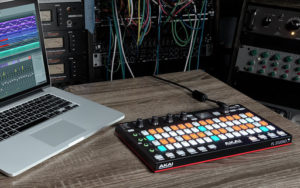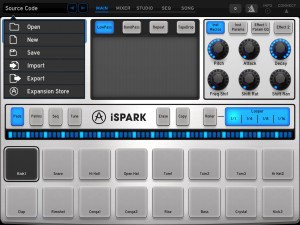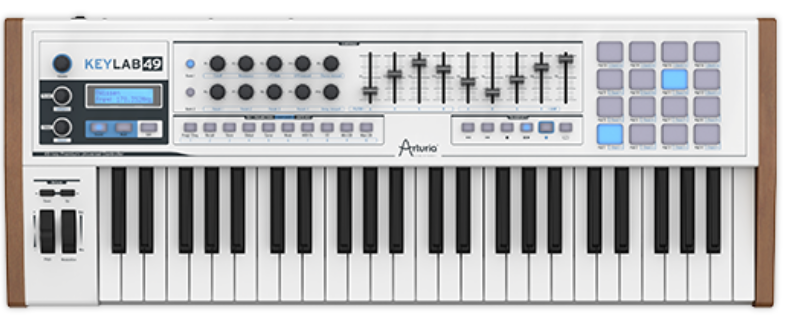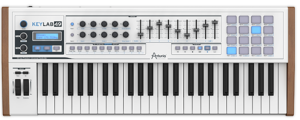In a home studio setting there are a few things to consider when working on a mix, sound designing , or generally exploring sound that will be eventually played back in other listening environments. One of the major factors is of course how a mix will translate across different audio monitors.
Because of this necessity for mix translation, it is not uncommon to have more than one set of monitors in your set up. Often times this can pose an issue for home producers on how to accurately switch between monitors and gauge how a mix is translating between monitors.
I tend to handle a lot of preset design, and testing of gear pre and post release. This means I am often trying to evaluate sound for a variety of environments and use cases. Often I need to be critical of strange unexpected behavior in audio gear. Listening on more than one set of monitors and with a variety of options can be critical for this task.
This is where the SPL Marc One comes into play. The obvious actions are of course the ability to simply flip a switch and flick between two sets of monitors. This sounds trivial but there is more to it than that.
The first is that there are two sets of monitor inputs, one with a sub and one without, I tend not to use the sub output as my monitors sub has a built in cross over so the stereo out routes through the sub. Between the A/B monitor switch is the OFF position. This is a handy quick mute function to turn off both monitors.
The volume control is a large knob with analog control. This is important to me. It means monitoring at lower volumes will not reduce audio quality of playback as some digitally controlled devices may do. It also means that I always have direct hands on control of my audio level, no glitches or hang ups will prevent control.

Next to the volume is our Stereo controls. This allows us to quickly flip between mono, stereo and Flipped monitor configurations (flipping the left channel to come out the right speaker and visa versa.) I have to admit while I am used to using a mono control for mixing , the left right flip was a bit of an eye opener to me. Many people have a dominant ear and its been proven that we perceive music differently in one ear and speech in the other. I found myself using this switch more often than I expected and it really helped me trouble shoot some strange audio issues.
Next up are two small LED that indicate if the converters are being overloaded. This can not be understated. I have become very aware of the sound of modern day converters overloading and how they can alter your sound. in the modern age this can be slightly more complicated than in the past due to converters having soft clipping built right into them. Often times this soft clipping isn’t the harsh digital clipping we have grown accustomed to spotting so easily. Having a quick overload LED indicator is quite nice to just confirm that you are within the limits before any sort of distortion can occur.
Now before moving on lets just talk a bit about those converters. These days converter tech has really exploded and we have some fantastic chips out there. the SPL Marc One takes advantage of this by using the AK4490 converter chip for the USB audio which enables sampling frequencies up to 768kHz. Those numbers are rather astounding and delivering a 10Hz–200kHz frequency range, 121dBu of dynamic range, -99dBu of self-noise, and 0.002% total harmonic distortion. These are literally top shelf numbers.
These Analog audio inputs can be blended with USB digital audio inputs utilizing the convert mentioned above. there is a smooth control to blend between these inputs.
Next up with have the Headphone controls. Here you will notice a familiar volume control but then you are presented with a “Crossfeed” control. This is the Phonitor Matrix headphone controls. What this does is essentially allows your headphone output to have a bleed across left and right channels while also simulating speaker angle of 30 degrees and a center level of -1db. All controlled through one Crossfeed knob to adjust to taste and your headphones no longer sound like static left right cans on your head. They feel like speakers in a physical space. What I like about this is that it didn’t feel like an effect slapped onto a mix. listening to familiar material it simply made my headphones melt away and I felt like I had a pair of monitors at a proper listening positioning in front of me. There is still proper channel separation going on but it doesn’t feel hard line like headphones usually feel. I found my self enjoying music with headphones on and preferring the crossfeed turned up about 3/4 of the way up.
My Use case might be a tad different from others. One of the recommended methods of operation is of course to send your DAW output direct to the USB input on the Marc One. For me I was primarily using the Analog inputs and I would use an Ipad input into the Marc one for sound designing presets on the ipad. I like to work stand alone from my computer quite a bit and my audio interface often acts as a patch bay without forcing me to use a DAW. This method was seamless with the Marc one and VERY helpful. It essentially means you have the highest quality iOS audio output available… whats not to like?
So lets get to the cons… I had tho really think about this and honestly I think the only thing I would have liked to see included on this would be a way to disengage the sub on channel A with a footswitch while still sending audio out channel A (this is often a separate device though and understandable.) I also would have really liked a Dim as well.
Overall I really enjoy it. much of the design is over the top with quality. Thats something I can always get behind. Who do I think really benefits from a controller like this? I think especially people with audio interfaces that do not already have monitor controlling built in certainly. However I currently use a MOTU 828es as my main interface and it has monitor controlling built in already. Thing is the MOTU has a Mute and mono but it does not have the immediate analog volume control, the channel swap, the Crossfeed Phonitor headphone mix nor the ability to add in the USB audio of an external source without having to dive into my software.
SPL Marc One Monitor and Recording Controller Features:
- Monitor and recording controller built with top-drawer components
- Switchable outputs for 2 pairs of speakers
- Subwoofer output switches on and off with speaker pair A
- 2 analog stereo inputs and 1 digital input — enough to hear your mix and reference tracks
- 3 monitoring modes: Stereo, Mono, and Channel Swap
- AK4490 converter chip enables sampling frequencies up to 768kHz
- Class AB output stage with ample power for a wide range of popular headphone models
- Phonitor Matrix with Speaker Angle, Center Level, and Crossfeed parameters for a speaker-like monitoring experience
- Supplied 12V plug-in power supply
- Secondary internal power supply generates +/-17V for the analog audio sections for pro levels up to +22.5dB
Price $799 USD
If you don’t want the USB capabilities. you can opt for the SPL Control one which offers the same features minus the USB input and monitor blend for $599


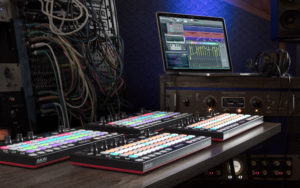 — Akai Professional, a leading manufacturer of music equipment for performers and producers, today announced their newest product, the Akai Fire. Created in close collaboration with software manufacturer Image-Line, Fire finally gives FL Studio producers a dedicated hardware controller – designed to speed up the creative workflow and enhance the overall user experience. Released shortly after the successful launch of FL Studio 20, Fire celebrates the highly-anticipated arrival of FL Studio to the Mac OS platform, creating a completely new, hands-on way to interact with the popular DAW for PC and Mac users alike.
— Akai Professional, a leading manufacturer of music equipment for performers and producers, today announced their newest product, the Akai Fire. Created in close collaboration with software manufacturer Image-Line, Fire finally gives FL Studio producers a dedicated hardware controller – designed to speed up the creative workflow and enhance the overall user experience. Released shortly after the successful launch of FL Studio 20, Fire celebrates the highly-anticipated arrival of FL Studio to the Mac OS platform, creating a completely new, hands-on way to interact with the popular DAW for PC and Mac users alike.